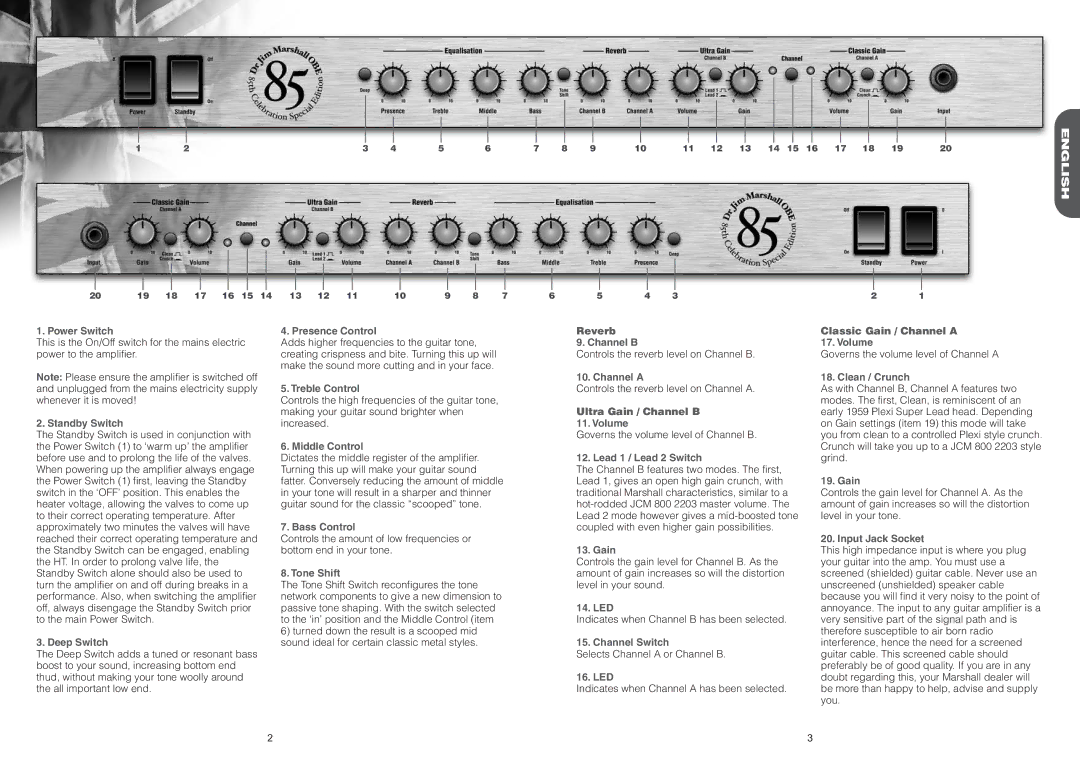1923C, 1923 specifications
Marshall Amplification has been a cornerstone of the music industry since its inception in 1962, known especially for its electric guitar amplifiers. However, the brand's evolution and its groundbreaking models, like the Marshall Amplification 1923 and 1923C, have drawn attention in recent years. These amplifiers embody both rich heritage and modern technological advancements, providing musicians with tools that enhance their sound.The Marshall 1923 is a dual-channel guitar amplifier that layers classic Marshall tones with contemporary features. This model includes a unique power scaling feature, allowing musicians to achieve cranked-up tones at manageable volume levels. This is particularly beneficial for home use or small venues where overwhelming sound levels are impractical, ensuring that the warm characteristics of tube-driven sound can be accessed without compromise.
One of the key highlights of the Marshall 1923 is its versatile tone-shaping capabilities. It features an EQ section that includes treble, mid, and bass controls, which offer a wide range of sonic possibilities. Whether a guitarist seeks a rich, creamy sustain for solos or a sharp, biting tone for rhythm parts, the 1923 can accommodate diverse musical styles.
Similarly, the 1923C model amplifies the key features of the 1923 but includes additional functionalities tailored for more extensive live performance settings. The 1923C is equipped with built-in effects loops, allowing guitarists to integrate their favorite pedals seamlessly. This model also boasts a higher wattage output, providing more headroom and dynamic range for those explosive moments during a live set.
Both models feature rugged construction to endure the rigors of touring and performance, with high-quality components that ensure durability. The classic Marshall aesthetic—a black vinyl covering with distinctive gold piping—exudes a timeless appeal that stands out on stage and in the studio.
The integration of modern technologies with the traditional craftsmanship of Marshall amplifiers has made the 1923 and 1923C appealing to guitarists who wish to maintain a connection to the iconic sounds of rock while leveraging today's advancements for improved playability and versatility. Whether in the rehearsal space, studio, or on the main stage, these amplifiers continue to inspire creativity and sound excellence among musicians worldwide.

